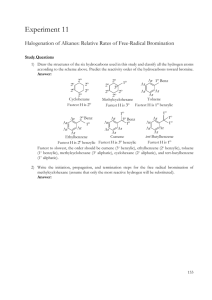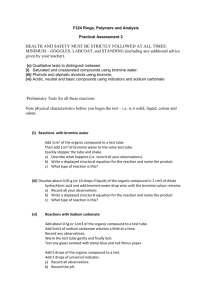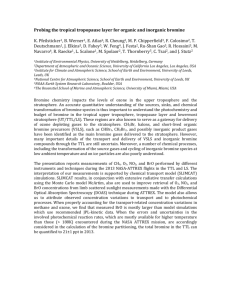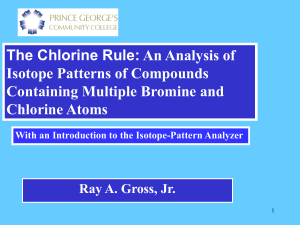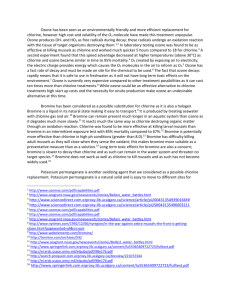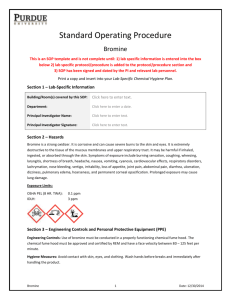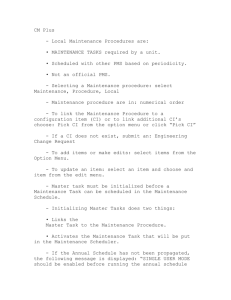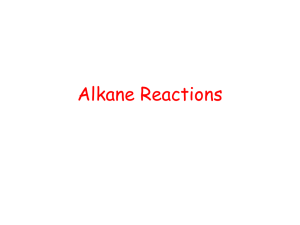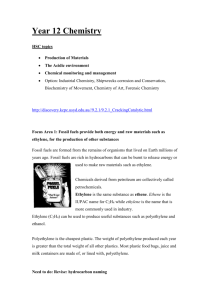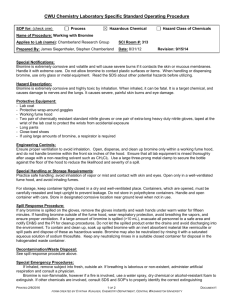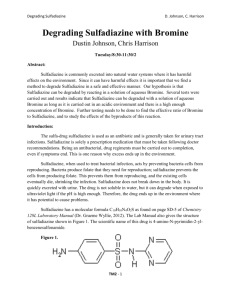the halogenation of alkanes and cycloalkanes
advertisement
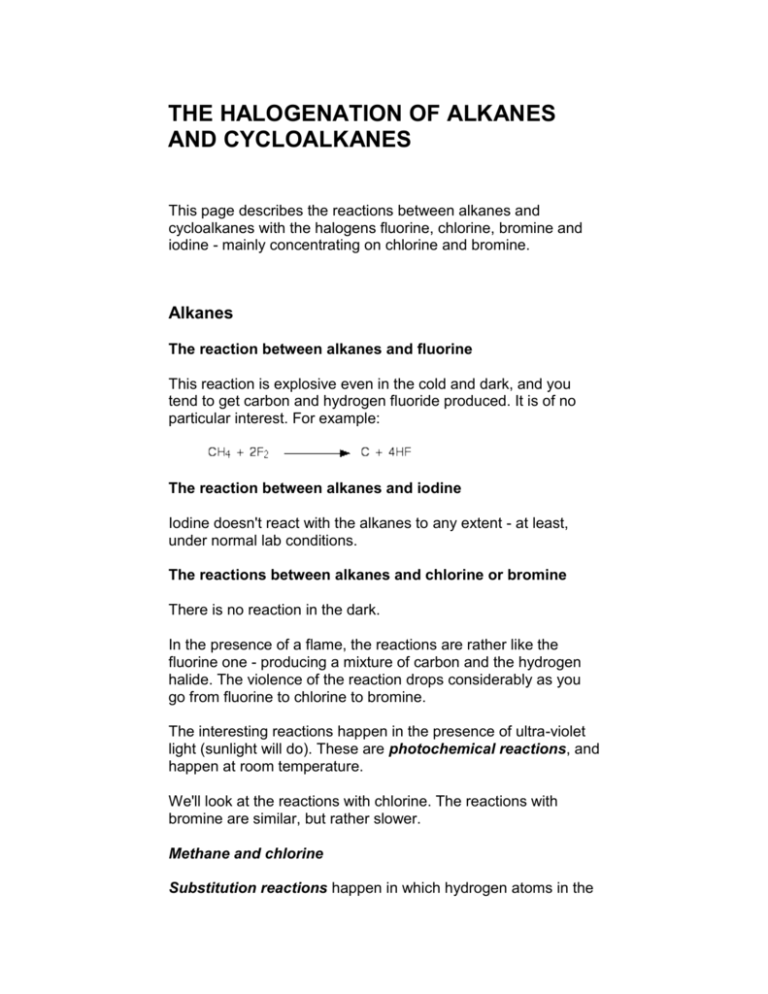
THE HALOGENATION OF ALKANES AND CYCLOALKANES This page describes the reactions between alkanes and cycloalkanes with the halogens fluorine, chlorine, bromine and iodine - mainly concentrating on chlorine and bromine. Alkanes The reaction between alkanes and fluorine This reaction is explosive even in the cold and dark, and you tend to get carbon and hydrogen fluoride produced. It is of no particular interest. For example: The reaction between alkanes and iodine Iodine doesn't react with the alkanes to any extent - at least, under normal lab conditions. The reactions between alkanes and chlorine or bromine There is no reaction in the dark. In the presence of a flame, the reactions are rather like the fluorine one - producing a mixture of carbon and the hydrogen halide. The violence of the reaction drops considerably as you go from fluorine to chlorine to bromine. The interesting reactions happen in the presence of ultra-violet light (sunlight will do). These are photochemical reactions, and happen at room temperature. We'll look at the reactions with chlorine. The reactions with bromine are similar, but rather slower. Methane and chlorine Substitution reactions happen in which hydrogen atoms in the methane are replaced one at a time by chlorine atoms. You end up with a mixture of chloromethane, dichloromethane, trichloromethane and tetrachloromethane. Note: Follow this link if you aren't happy about naming organic compounds. Use the BACK button on your browser to return to this page. The original mixture of a colourless and a green gas would produce steamy fumes of hydrogen chloride and a mist of organic liquids. All of the organic products are liquid at room temperature with the exception of the chloromethane which is a gas. If you were using bromine, you could either mix methane with bromine vapour, or bubble the methane through liquid bromine in either case, exposed to UV light. The original mixture of gases would, of course, be red-brown rather than green. You wouldn't choose to use these reactions as a means of preparing these organic compounds in the lab because the mixture of products would be too tedious to separate. The mechanisms for the reactions are explained on separate pages. Note: If you want the methane-chlorine mechanism, follow this link. If you want the methane-bromine mechanism, follow this one. Use the BACK button on your browser to return to this page. Larger alkanes and chlorine You would again get a mixture of substitution products, but it is worth just looking briefly at what happens if only one of the hydrogen atoms gets substituted (monosubstitution) - just to show that things aren't always as straightforward as they seem! For example, with propane, you could get one of two isomers: Note: If you aren't sure about isomerism, you might like to follow this link. Use the BACK button on your browser to return to this page. If chance was the only factor, you would expect to get 3 times as much of the isomer with the chlorine on the end. There are 6 hydrogens that could get replaced on the end carbon atoms compared with only 2 in the middle. In fact, you get about the same amount of each of the two isomers. If you use bromine instead of chlorine, the great majority of the product is where the bromine is attached to the centre carbon atom. The reasons for this are beyond UK A level chemistry. Cycloalkanes The reactions of the cycloalkanes are generally just the same as the alkanes, with the exception of the very small ones particularly cyclopropane. The extra reactivity of cyclopropane In the presence of UV light, cyclopropane will undergo substitution reactions with chlorine or bromine just like a noncyclic alkane. However, it also has the ability to react in the dark. In the absence of UV light, cyclopropane can undergo addition reactions in which the ring is broken. For example, with bromine, cyclopropane gives 1,3-dibromopropane. This can still happen in the presence of light - but you will get substitution reactions as well. The ring is broken because cyclopropane suffers badly from ring strain. The bond angles in the ring are 60° rather than the normal value of about 109.5° when the carbon makes four single bonds. The overlap between the atomic orbitals in forming the carboncarbon bonds is less good than it is normally, and there is considerable repulsion between the bonding pairs. The system becomes more stable if the ring is broken.
![[1] - Boswellsgmt](http://s3.studylib.net/store/data/006603407_1-fadfbce8d94050a9fb3c38a07d86e8ee-300x300.png)
